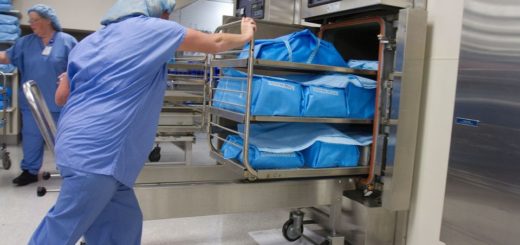How to Prepare for the CRCST Certification Exam: Tips and Strategies
Are you ready to take your career in the healthcare industry to the next level?
Becoming a Certified Registered Central Service Technician (CRCST) can open up new opportunities and help you stand out in a competitive job market.
But first, you’ll need to pass the CRCST certification exam. Don’t let the thought of a challenging exam intimidate you! With the right preparation and study strategies, you can increase your chances of passing the exam on your first attempt.
In this blog post, we’ll explore some practical tips and strategies for how to prepare for the CRCST certification exam. From creating a personalized study plan to taking advantage of practice exams, we’ll guide you through the process of acing the exam and becoming a Certified Registered Central Service Technician.
So, grab a cup of coffee and let’s dive into the world of CRCST certification!
Understanding the CRCST Certification Exam
The Certified Registered Central Service Technician (CRCST) exam is a comprehensive test designed to evaluate the knowledge and skills of individuals seeking certification in the field of sterile processing.
The exam is administered by the International Association of Healthcare Central Service Materiel Management (IAHCSMM) and is recognized as the gold standard in the industry.
Exam Format
The CRCST exam consists of 150 multiple-choice questions that must be completed within a three-hour time limit. The exam is computer-based and is administered at approved testing centers throughout the United States and Canada. Candidates must achieve a passing score of 70% or higher to earn their CRCST certification.
The exam is designed to assess a candidate’s knowledge in several key areas, including:
- Decontamination
- Preparation and Packaging
- Sterilization
- Storage and Distribution
- Quality Assurance
- Management Functions
Exam Content
The CRCST exam is divided into six content areas, each of which is weighted differently:
| Content Area | Number of Questions | Percentage of Exam |
|---|---|---|
| Decontamination | 30 | 20% |
| Preparation and Packaging | 35 | 23.33% |
| Sterilization | 35 | 23.33% |
| Storage and Distribution | 20 | 13.33% |
| Quality Assurance | 20 | 13.33% |
| Management Functions | 10 | 6.67% |
Candidates should focus their studies on these content areas and ensure that they have a thorough understanding of the topics covered in each section. Additionally, candidates should familiarize themselves with the exam format and practice taking sample tests to build their confidence and test-taking skills.
READ: CBSPD Certification: A Game-Changer for Your Sterile Processing Career
Creating a Study Plan
Preparing for the CRCST certification exam requires a well-structured study plan that will help you cover all the topics that will be tested. Here are some tips on how to create a study plan that works:
Identifying Your Weaknesses
The first step in creating a study plan is to identify your weaknesses. Take a practice test to assess your knowledge and skills. This will help you determine the areas that need improvement. Once you have identified your weaknesses, you can focus on studying those topics more intensively.
Setting Realistic Goals
Setting realistic goals is crucial to staying motivated and on track. Break down your study plan into manageable chunks and set achievable goals for each study session. For example, you could aim to study one chapter of your study material per day. This will help you stay focused and avoid feeling overwhelmed.
Choosing Study Materials
Choosing the right study materials is essential to your success. Look for study guides and practice tests that are specifically designed for the CRCST exam. You may also want to consider joining a study group or taking an online course to supplement your self-study. Make sure to choose materials that are up-to-date and accurate.
READ: The Role of CRCST in Ensuring Compliance with AAMI Guidelines for Sterile Processing
Effective Study Techniques
Preparing for the CRCST Certification Exam can be a daunting task, but with the right study techniques, it can be a manageable process. Here are some effective study techniques:
Active Recall
Active recall is a study technique that involves actively retrieving information from memory. This technique helps to strengthen memory retention and improve long-term learning. To use active recall, study the material and then try to recall it from memory without looking at the notes or textbook. This technique can be done through flashcards, quizzes, or summarizing the material in your own words.
Spaced Repetition
Spaced repetition is a study technique that involves reviewing material at increasing intervals. This technique helps to reinforce memory retention and improve long-term learning. To use spaced repetition, study the material and then review it again after a certain amount of time, such as a day or a week. The time between each review should increase as you become more familiar with the material.
Practice Questions
Practice questions are an effective study technique because they help to familiarize you with the format of the exam and the types of questions that will be asked. Practice questions also help to identify areas that need further review. Use practice questions from textbooks, online resources, or study guides to prepare for the exam.
Test-Taking Strategies
Preparing for the CRCST certification exam involves not only studying the material but also developing effective test-taking strategies. Here are some tips and techniques that can help you improve your performance on the exam:
Time Management
Time management is crucial when taking any exam, and the CRCST certification exam is no exception. You will have three hours to complete the exam, which consists of 150 multiple-choice questions. That means you will have an average of just over one minute per question.
It is important to pace yourself and not spend too much time on any one question. If you are unsure of an answer, mark it and move on. You can always come back to it later if you have time.
Answering Difficult Questions
Difficult questions can be intimidating, but there are strategies you can use to increase your chances of answering them correctly. First, read the question carefully and make sure you understand what it is asking. Then, eliminate any obviously incorrect answers.
If you are still unsure of the correct answer, use your knowledge of the subject matter to make an educated guess. Look for clues in the question or the answer choices that can help you narrow down your options.
Elimination Techniques
Elimination techniques can be especially helpful when you are unsure of the correct answer to a question. Start by eliminating any obviously incorrect answers. Then, look for answer choices that are similar or redundant. If two answer choices are saying the same thing, one of them is likely incorrect.
Another technique is to look for answer choices that are extreme or absolute. Words like “always” or “never” are often clues that the answer is incorrect. Finally, if you are still unsure, guess. You will not be penalized for incorrect answers, so it is better to guess than to leave a question unanswered.
Final Tips and Recommendations
After months of studying and preparing, the day of the CRCST certification exam has finally arrived. Here are some final tips and recommendations to help ensure success:
First and foremost, it is important to get a good night’s sleep before the exam. Being well-rested will help with focus and retention of information. Additionally, it is recommended to eat a healthy breakfast on the day of the exam to fuel the brain and provide energy for the duration of the test.
During the exam, it is important to manage time effectively. The CRCST exam has 150 multiple-choice questions to be answered in a limited amount of time. It is recommended to allocate a certain amount of time to each question and to not spend too much time on any one question.
Another important strategy is to read each question carefully and thoroughly. It is easy to misinterpret a question or miss important details if rushing through the exam. Take the time to fully understand each question and all of the answer choices before selecting an answer.
Finally, it is important to stay calm and focused throughout the exam. If feeling overwhelmed, take a deep breath and refocus on the task at hand. Remember, the CRCST certification exam is designed to test knowledge and skills in sterile processing, and with proper preparation and a clear mind, success is achievable.
READ: Sterile Processing: Importance, Procedures, and Best Practices



